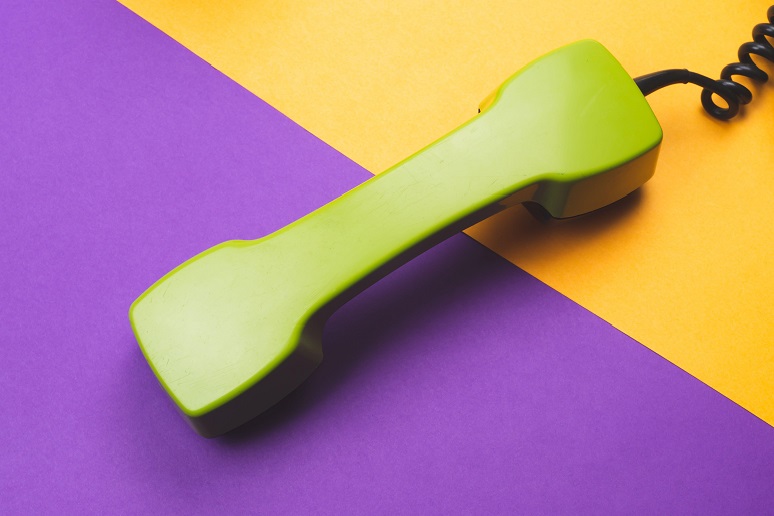So, you want to change communications service providers but keep your telephone numbers – sounds like a simple enough request. However, whether you have ten or ten thousand numbers, porting your number from one provider to another is never smooth. A lot can go wrong, including both service interruption and erroneous billing.
In consultation with several other Society of Communications Technology Consultants members, we came up with several question that enterprises should answer before embarking on a porting adventure. For a sense of how tedious the porting process is
Melinda Sensabaugh of Vita Safety Partners observed that in her 25 years as a consultant, the porting process has not gotten any better, and
Nick Calautti of CellC considers porting a four-letter word. A quick note, our comments below apply to fixed line services, and separate issues should be considered for porting mobile numbers.
1. What types of telephone numbers are you using?
Are the numbers that you are porting direct dial numbers (also called direct inward dial [DID])? These are software numbers that typically come to you on high-capacity circuits, using voice over IP and older technologies. Are they dial-tone line numbers (i.e., plain old telephone service [POTS])? These are typically associated with a physical pair of copper wires (for now – that is changing).
2. Do you have a complete list of all telephone numbers you want to port?
Most organizations do not do a good job of
keeping track of their telephone numbers. The best way to get a list is to request it from your current communications service provider. To get a complete list, make sure you provide them with each of your billing account numbers if you have more than one account. Once you have the list, do your own verification, as sometimes your provider’s list is not 100% accurate. If a number can’t be found in you service providers records, you may not be able to port it.
3. Have you conducted a billing and number clean up at the beginning of the process?
While this is not a requirement to port numbers, it doesn’t make sense to go through the trouble of porting numbers that
you are not using or do not need. As mentioned above, the bills are the best starting point for identifying your telephone numbers. Don’t forget to include direct-dial numbers that you are holding for future use (not currently working). As part of this exercise, it is advisable to identify for what purpose you are using each of your telephone numbers as your communications service provider does not typically know this.
4. Are your telephone numbers associated with separate circuits that should be disconnected after you port them?
As mentioned above, your direct-dial numbers are coming to you over a high-capacity circuit that you are paying for. This may be called a T1, PRI, MPLS, Internet Access or some other type of circuit that can handle your incoming and outgoing calls. It often happens that after you are successful at porting your numbers to a new provider, the billing for this circuit from the old provider continues. You are responsible for placing the order to disconnect it and to confirm that the billing has stopped. Also, be sure that the old provider has programmed your telephone numbers out of their system once they are ported. It sometimes happens that the numbers stay in both the old and new provider’s systems, which can cause some confusion and may result in ongoing billing of numbers from the old provider.
Ted Mallires of The Baz Group found that a new client was still paying their former service provider for 4,000 direct dial numbers more than ten years after they had been ported.
5. Do you actually own your telephone numbers? If not, you may not be able to port them.
Some service providers claim to own the telephone numbers you are buying from them and will not let you port them.
J.R. Simmons of Ross & Baruzzini reported that one company had telephone numbers at over 2,700 locations and could not port about 20% of them that were provided by small telephone companies who did not permit porting. Try to add language in your current service provider agreement stating that you own your numbers and have the right to port them to another provider.
Other SCTC members also shared their issues with telephone number ownership.
Linda Barnes of Natural Habitats LLC mentioned a situation where a fax service provider would not release fax telephone numbers to be ported, and
Dave Mailer of 4C Strategies had a situation in the U.K. where a hosted telephone system provider would not release numbers, claiming to own the number range.
Lee Balaklaw of Schooley Mitchell referenced similar experiences where his client was consolidating multiple carriers into a single carrier, and
Dan Aylward of Abilita had an experience where the large losing carrier kept two costly PRI circuits working due to a single “straggler” telephone number that was not ported.
6. Have you identified any numbers that are call forwarded?
If you have a number that is call forwarded to another telephone number, be sure to include both numbers in your porting request and make it clear that there is a call forwarding arrangement if this needs to be replicated. Toll-free numbers (some are called 800 Readylines) are often forwarded to a separate telephone number, so this needs to be addressed as well to be sure that the porting does not interfere with the arrangement.
7. Have you identified variables that may affect your porting timetable?
Additionally, you might experience rules and variable that can impact your porting timetable.
Melissa Swartz of Swartz Consulting LLC worked on a project where the receiving carrier had a rule that only one order at a time could be placed to move groups of numbers to their SIP trunks. This resulted in successive intervals of 30 days that significantly lengthened the porting process.
8. How will porting affect your outgoing calling?
Since it is likely that the service provider you are porting away from was handling outgoing calls as well as incoming, it is important to be clear to the new service provider as what your expectations are for outgoing calls. For example, when your users place an outgoing call will the recipient receive the caller ID in the way you want it (number only, name of caller, or main company number?) And who will carry your local and long-distance calls? Likely it will be the new provider but need to let them know if you have another preference. Also, important to get the cost of local and long distance calling as part of your agreement.
Jane is writing on behalf of the SCTC, a premier professional organization for independent consultants. Our consultant members are leaders in the industry, able to provide best of breed professional services in a wide array of technologies. Every consultant member commits annually to a strict Code of Ethics, ensuring they work for the client benefit only and do not receive financial compensation from vendors and service providers.











